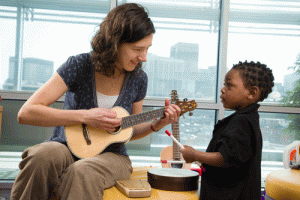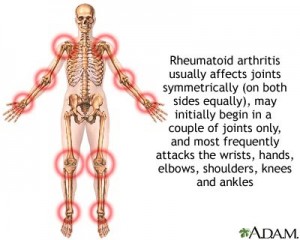The British Medical Journal published a review about human oncolytic virus research in 2020. That is to say, the BMJ published this report in July 2020. On the negative side, the report is rather complex with many technical terms. With this in mind, I will keep it as simple as possible for this summary. Notably, oncolytic viruses are a new way of treating cancer. Adenovirus was the most common oncolytic virus in use by cancer research in the past 20 years. It must be remembered, researchers applied this to mainly melanoma and gastrointestinal cancers. In the past I discussed the use of oncolytic viruses in a related post.
History of licencing of oncolytic viruses
- The first oncolytic virus was licenced in 2004 in Latvia. This was an RNA virus derived from the native ECHO-7 strain of a picornavirus, called Rigvir. This oncolytic virus was approved for treating melanomas.
- Shortly after, in 2005, China approved a genetically modified adenovirus, H101 as an oncolytic virus. The approval was for the treatment of nasopharyngeal carcinoma combined with chemotherapy.
- In 2015, the U.S. the FDA approved T-VEC (Talimogene laherparepvec), an attenuated herpes simplex virus, type 1. This new oncovirus encodes granulocyte-macrophage colony-stimulating factor (GM-CSF). This is effective for the local treatment of inoperable, recurrent melanoma. It works for cutaneous, subcutaneous and nodal lesions in patients with recurrent melanoma after initial surgery.
Review of 20 years of human oncolytic virus research
The investigators reported about 97 clinical trials with oncolytic viruses performed between 2000 and 2020. That is to say, this involved 3233 patients with cancer. Most of these trials were phase I (50.5%) trials. There were an additional 6.2% studies, which were phase I/II. 11.3% were phase II clinical trials and only 2.1% were phase III clinical trials. 29.9 % of the literature did not specify what type of trial the investigations were about. However, they likely belonged into the phase I category as they reported on first trials of a therapy on man.
Oncolytic viruses derive from various types of viruses
The number of studies that used a certain virus-derivative are included in brackets. It must be remembered that most of the studies dealt with six viruses: adenoviruses (30), herpes simplex virus (HSV-1) (23), reovirus (19), poxvirus (12), Newcastle disease virus (NDV) (5) and measles virus (3).
Stimulation of the immune system through GM-CSF
In 24 studies the researchers introduced GM-CSF transgene into an oncolytic virus. GM-CSF is a glycoprotein that is normally produced by granulocytes, a type of white blood cell. In this case, it stimulates dendritic cells, the precursors of T cells to produce killer T cells. Notably, this stimulates the immune system to better fight cancer.
Types of cancer targeted with oncolytic viruses
It is important to realize that the majority of the studies treated melanoma cases and gastrointestinal cancers. Namely, gastrointestinal cancers included esophageal cancer, gastric (stomach) cancer, colorectal cancer and pancreatic cancer. There were 30 studies involving melanomas with 1000 patients. There were 76 clinical trials regarding gastrointestinal cancers with 577 patients.
Moreover, other cancers where oncolytic viruses were studied were head and neck cancer (15 studies) breast and gynecological cancers (31 studies), genitourinary cancers (26 studies), and sarcomas (16 studies).
Other drugs given along with oncolytic viruses
It must be remembered that of the 97 total studies 62.9% were clinical trials where oncolytic viruses were the only therapy. In 37.1% of the studies physicians gave the oncolytic viruses along with cytotoxic chemotherapy, immunotherapy or radiotherapy.
Side effects of treatment with oncolytic viruses
The safety profile for treatment with oncolytic viruses appears to be tolerable. Fever was common, as were chills. Some patients reported nausea and vomiting, flu-like symptoms, fatigue and pain. But these symptoms disappeared within a few days.
Suppression of the bone marrow for a period of time was common, but more so when there was a combination of oncolytic viruses with chemotherapy. None of the patients transmitted viruses to household contacts or the healthcare team.
Antitumor activity in clinical trials with involvement of oncolytic viruses
An analysis of clinical responses to oncolytic virus therapy showed the following:
- 1% had disease control, which broke down as follows (items 2,3 and 4)
- 4% complete control (=cure)
- 7% partial control
- 12% stable disease
- 9% No response to treatment with oncolytic viruses
HSV-1 derived oncolytic viruses had the best response. The responses were not as good with adenovirus, reoviruses and with vaccinia viruses.
Discussion
Researchers of the BMJ publication analysed 97 clinical trials regarding oncolytic viruses over the past 20 years. This showed a number of points worth mentioning.
- The goal of oncolytic virus therapy is to induce tumor cell death. Physicians could achieve this indirectly by stimulating the immune system. Oncolytic viruses can stimulate both the innate immune system and the tumor-specific adaptive immune response.
- In the earlier years a lot of clinical trials investigated the safety of oncolytic viruses. But it became clear that oncolytic viruses were safe and fairly well tolerated.
- Many clinical trials involved oncogenic viruses with GM-CSF recombinant genes. This gene makes the oncolytic virus produce the GM-CSF protein, which stimulates dendritic cells. The end result is that the immune system produces more killer T cells that attack cancer cells, which results in higher cure rates.
More problems with oncolytic viruses
- There are still many questions about how oncolytic viruses stimulate the immune system. More basic research is necessary in this field. Despite 20 years of research the cure rate of 3.4% and achieving partial control and stable disease in another 17.7% is not acceptable. Perhaps combinations with other cancer treatment methods may improve the cancer cure rates. The reviewers suggested one such combination, namely immune checkpoint blockade with oncolytic virus therapy.
- There is no resolution about which route of administering oncolytic viruses is best. Intratumor application in melanoma cases seems the be optimal. But other solid tumors are difficult to reach. In these cases, intravenous applications were a choice. In this case oncolytic viruses experience dilution in the blood and do not have a high enough concentration when they arrive at the cancer.
Conclusion
In a review researchers discussed the use of oncolytic viruses in cancer therapy over 20 years . Oncolytic viruses are derivatives mostly from adenoviruses, herpes simplex virus (HSV-1), reovirus, poxvirus, Newcastle disease virus (NDV) and the measles virus. In various clinical trials researchers found that disease control was achieve in only 21.1% of treated cases. There was a cure rate of 3.4%, but another 17.7% had partial control of the cancer or stable disease. But 78.9% of treated patients showed no response to treatment with oncolytic viruses. Obviously more research is necessary to improve the cure rates in cancer patients treated with oncolytic viruses. Clinical trials with combinations of immune checkpoint blockade and oncolytic virus therapy would also be helpful. All in all, oncolytic therapy is at this point not yet an effective form of treatment for cancer.













